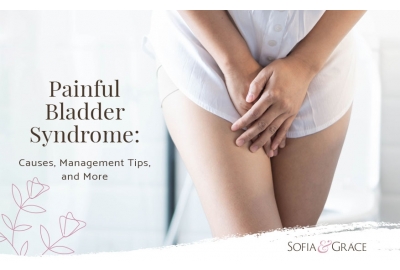
Painful Bladder Syndrome: Causes, Management Tips, and More

Painful bladder syndrome is formally known as interstitial cystitis (IC) and is sometimes also called bladder pain syndrome. This condition is thought to affect between three million and eight million women in the United States, as well as between one million and four million men. Read on to discover the symptoms of painful bladder syndrome, what causes this condition, and how it is diagnosed and treated.
What is painful bladder syndrome?
Painful bladder syndrome is a chronic bladder health issue that involves feelings of pain and pressure in the bladder areas. Symptoms can be mild to severe, and they may be consistent or may come and go. Usually it is diagnosed when symptoms have been present for at least six weeks and no other cause can be determined. While it may feel similar to a bladder infection, it is not in fact an infection.
Bladder pain syndrome is usually marked by increases in both the urgency and frequency of urination, and it is accompanied by discomfort and pain as well. The average person urinates no more than seven times a day, and gets up no more than once per night to use the restroom. If you find yourself going more often than that — especially if you’re still drinking the same level of fluids — then that frequent urination could be a symptom of interstitial cystitis. This is often accompanied by an overwhelming urge to urinate, which might not go away even after you do void your bladder.
What Is Considered Frequent Urination?
The pain and pressure often increase as your bladder becomes more full. The pain may also not be localized to the bladder itself. Some people experience it in the urethra, lower abdomen, lower pack, pelvic and perineal area, the vulva or vagina, and the scrotum, testicles, or penis. This pain may be constant or intermittent.
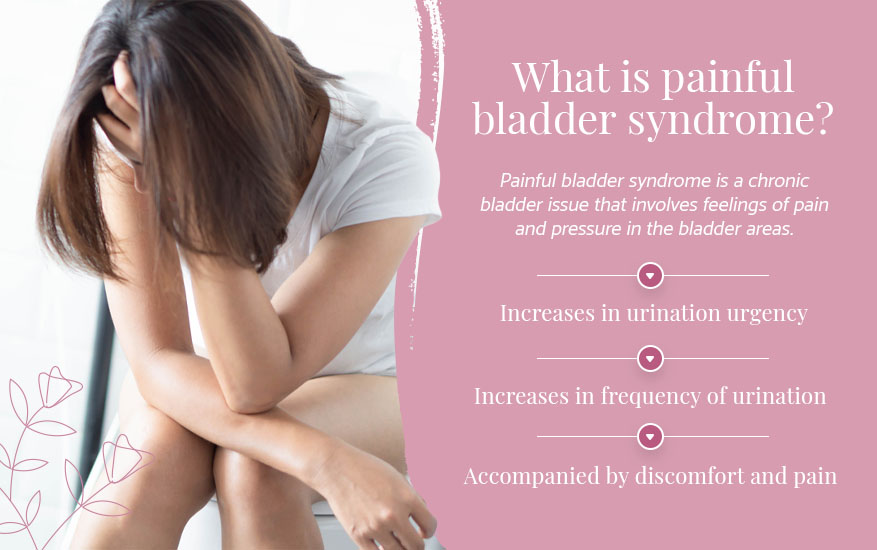
What causes painful bladder syndrome?
The exact causes of painful bladder syndrome are not yet known, and more research is being done on them. Certain things do increase your risk of developing interstitial cystitis, including previous bladder infections, having a family history of bladder pain syndrome, and having certain other conditions, including but not limited to irritable bowel syndrome (IBS), fibromyalgia, and chronic fatigue syndrome. Women are more likely to be diagnosed with painful bladder syndrome than men, and most people who are diagnosed are in their 30s or older.
If your painful bladder syndrome only flares up occasionally, you should pay attention to what triggers might be causing it. Some common triggers of painful bladder syndrome include:
- Having sex
- Having a PAP smear
- Having a urinary tract infection
- Having a menstrual cycle
- Urinating, or holding in urine for a long period of time
- Becoming dehydrated
- Skipping meals
- Consuming certain foods or drinks
- Having allergies
- Changes in the weather or seasons
- Standing for long periods of time
- Taking certain medications
- Experiencing stress
- Physical activities, such as lifting heavy objects
In some cases, you may be able to manage your symptoms, such as eliminating certain beverages that cause bladder pain flare-ups. However, if everyday activity such as urinating, having sex, or being on your period trigger your symptoms, then talk to your doctor as soon as possible about how you can manage your condition.
Diagnosing painful bladder syndrome
There are many possible reasons for bladder pain. Interstitial cystitis is usually diagnosed in the absence of another condition, so your doctor will work with you to eliminate other possible causes, such as urinary tract infections, bladder infections, kidney stones, and cancer.
First, your provider will ask you for your personal and family health history, past and current health problems, medications, your symptoms and how long they have been occurring, and how your symptoms are affecting your everyday life. Next, they will likely perform a physical exam to look at the abdomen, the pelvis, and the rectum areas. Your doctor will also have you perform a urine test to look for symptoms of blood or infection in the bladder. They may also conduct neurological tests to see if you have any underlying neurological problems that could be triggering your symptoms. Your provider will also ask you to complete some questionnaires to help them determine your baseline pain values as well as the location of the pain, its intensity, and its characteristics. They will also talk to you about how often you void your bladder and how much volume you urinate at once.
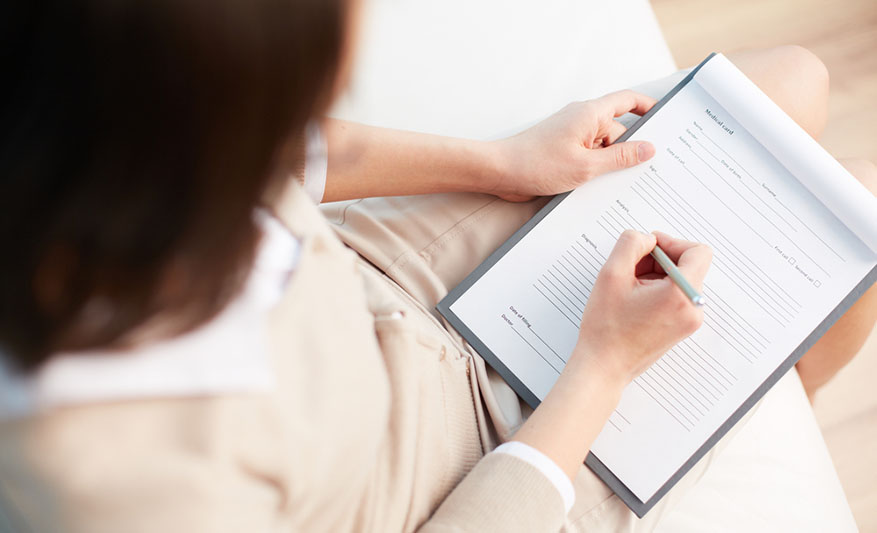
Yoru doctor might also conduct a urodynamic evaluation, which involves using a small catheter to fill the bladder with water. This test measures bladder pressure and capacity as it fills and empties. They may also conduct another test using a cystoscopy, which involves using a small camera on the end of a tube to look inside the bladder. This will allow the doctor to see if there are any bladder stones, tumors, or ulcers that could be causing the symptoms. If there are, the doctor can take care of these at the same time as a bladder biopsy.
Treatment for painful bladder syndrome
Treatment for bladder pain syndrome must be customized to each patient, and you may need a combination of therapies to achieve relief. It’s also common for these treatments to take weeks or months to take effect, so consistency and persistence is key. Your doctor will work with you to try different treatments and figure out which ones are most effective.
The first category of treatments is lifestyle changes to reduce potential triggers. Some of the most common triggers are food and drinks, such as citrus fruits and coffee. Your doctor may have you go on an elimination diet and stop eating and drinking all possible items that could be triggering your painful bladder syndrome. Once you go several weeks without consuming any potential triggers, your doctor will have you slowly add them back in one at a time and record your symptoms. This will allow you to see which foods and drinks are triggers for your specific condition, as not everyone is irritated by the same trigger foods. It’s imperative to only re-introduce one new food at a time so you can pinpoint what exactly is causing your symptoms. Learn more tips about how to calm an irritated bladder here.
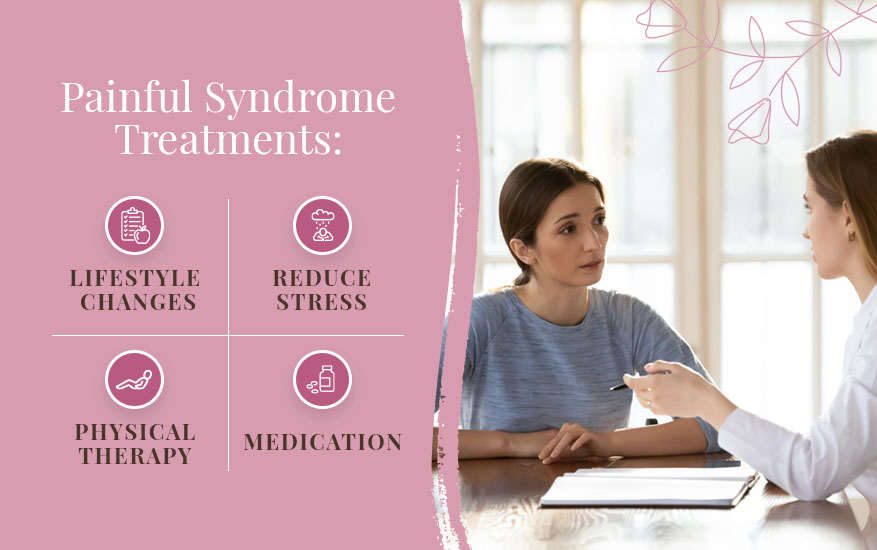
Your doctor will also likely recommend that you take steps to reduce your stress. Stress is a known contributing factor to many health conditions, including painful bladder syndrome. Tips to cope with stress include sleeping enough, exercising regularly, and eating a healthy diet. Try to remove as many stressors from your life as possible and closely manage the ones you cannot.
Your doctor might also suggest manipulative physical therapy to help address your symptoms. This therapy is different from pelvic floor exercises, which are designed to strengthen and tighten the muscles. Because bladder and pelvic pain can be caused by overly tight pelvic muscles, these types of exercises can actually make the symptoms worse. Always follow your doctor’s recommendations for any forms of physical therapy or exercises.
4 Pelvic Floor Release Stretches for Tight Muscles
If these lifestyle changes don’t help, then your doctor might prescribe medication. Medications that address interstitial cystitis are:
- Oral Pentosan Polysulfate: Taken in pill form, this drug is thought to rebuild the protective coating of the bladder tissue and usually takes three to six months to take effect.
- Dimethyl Sulfoxide (DMSO): The DMSO is placed into the bladder using a catheter once a week for six weeks and may be used sporadically later on as a maintenance treatment. It may be used in conjunction with heparin or steroids.
- Hydroxyzine: This antihistamine helps control inflammation and also leads to drowsiness, which can help patients sleep through the night and get up less frequently to pass urine.
- Amitriptyline: This antidepressant drug also has antihistamine effects and decreases bladder spasms in addition to slowing the nerves that carry pain messages. It is used for other types of chronic pain, such as cancer.
- Heparin: This has similar effects to pentosan polysulfate, but is placed in the bladder using a catheter like dimethyl sulfoxide.
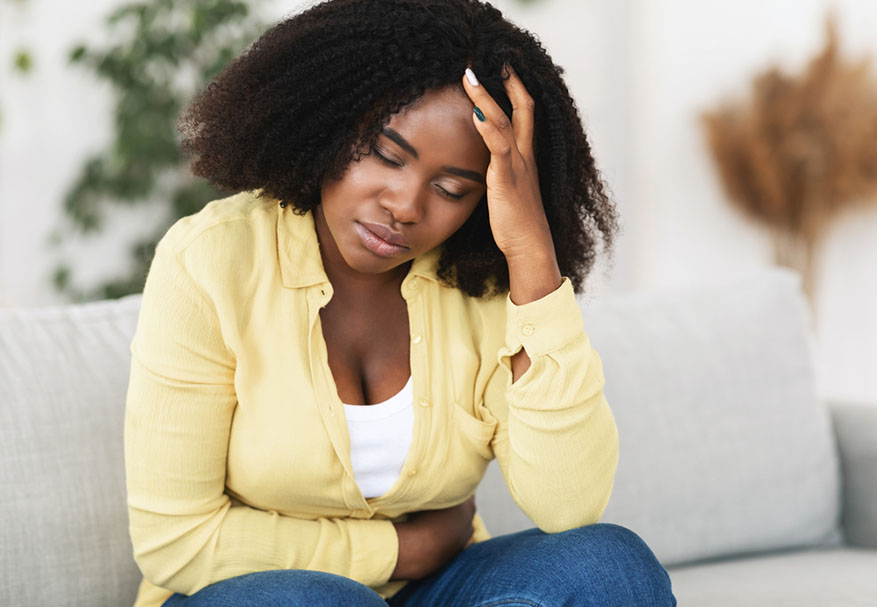
If neither lifestyle changes nor drugs work, then your doctor may recommend alternative forms of therapy. One type, neuromodulation, uses harmless electrical impulses to change how nerves work and to reduce pain signals. If you have ulcers, they may be cauterized or treated via steroid injection, which can give relief up to a year. This treatment can be repeated if your symptoms recur after a time. Botox injections may also be placed into the bladder muscles to partially paralyze them and help relieve pain. Botox wears off in six to nine months and may need to be repeated if you start experiencing symptoms again.
Finally, there are two treatments that doctors usually reserve for more extreme situations. One of these is a drug called cyclosporine, which is an immunosuppressant designed to help the body accept organ transplants. The drug reduces your ability to fight disease and also has many side effects. The other treatment is major surgery, which is typically used only in cases of severe bladder pain syndrome that has resisted all other treatments. Major surgery is only rarely used in cases of interstitial cystitis, and most patients find relief with some combination of the other therapies listed above.
Most patients need to continue treatment in order to experience ongoing relief from painful bladder syndrome. In some cases, you may have flare-ups while undergoing treatments. Symptoms can improve and even disappear, though they may come back even after a long time in remission (especially if you lapse back into your previous lifestyle). In that sense, interstitial cystitis is impossible to “cure,” and there is no guaranteed way to ensure that you will never have another flare-up again. Even if your treatment is successful, you might still urinate more often than the average person or experience discomfort.
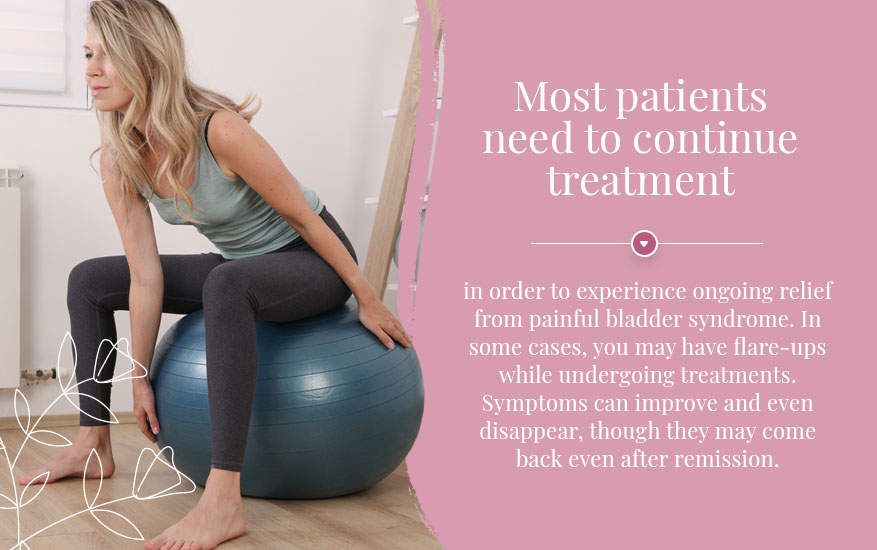
However, most patients do experience improvement from various forms of bladder pain therapy. Even if they do not respond well to interstitial cystitis treatments, they may still be able to use other pain management techniques (such as drugs and acupuncture) to have a good quality of life. Talk to your doctor today about what bladder pain therapies could make a difference in your life.
To learn more about different bladder conditions and therapies, including bladder training tips, then visit our resource center for more information guides just like this one. If you’re looking for a discreet way to buy incontinence products for women, then hop over to our storefront to browse the many great brands we offer. Sofia & Grace always ships right to your door in unmarked packaging so that the privacy of your delivery is ensured. Order from us today!
Browse All Bladder Control Products Here
Image Credits
MRAORAOR/Shutterstock.com
fizkes/Shutterstock.com
Pressmaster/Shutterstock.com
Albina Gavrilovic/Shutterstock.com
Prostock-studio/Shutterstock.com
davooda/Shutterstock.com
MAKSIM ANKUDA/Shutterstock.com